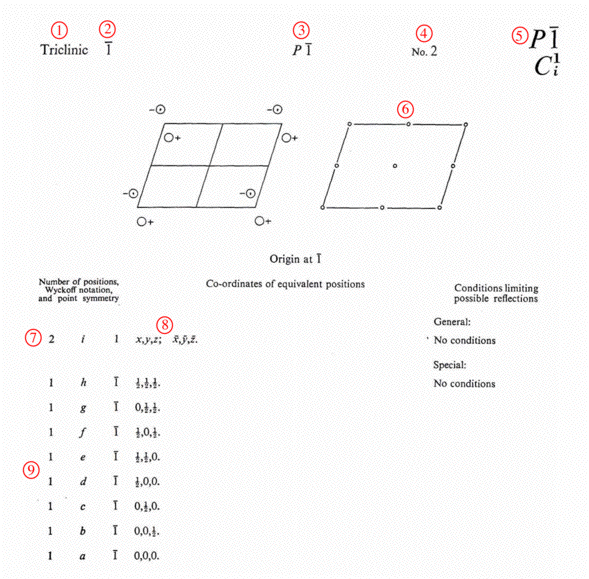|
Key:

1The asymmetric unit is the smallest piece of structural information needed to
reproduce the entire three-dimensional structure of the crystal. Often, the asymmetric unit is the
same as one molecule, but this isn't a requirement.
2The symmetry related positions are the atom locations produced by the various symmetry
operations. In this space group, for an atom at general location (x, y, z), there is an
identical atom at (-x, -y, -z).
3Special positions occur when an atom lies on a symmetry element. In this space group
(as in all centrosymmetric unit cells), there are eight centers of symmetry. If an asymmetric unit
lies on one of these centers, there is no requirement that it lie on all of them, only that they
all are centers of symmetry. For an example of a molecule that lies on a special position,
go here.
|

|
![]() is reproduced below:
is reproduced below:

